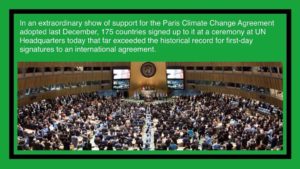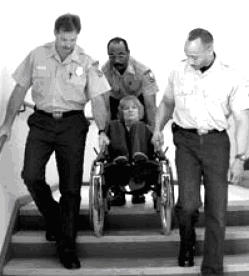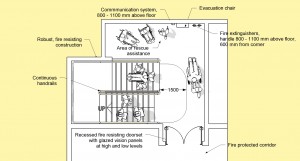2016-04-23: Yesterday … Earth Day … and also the Official Signing Ceremony for the 2015 Paris Climate Change Agreement at United Nations Headquarters, in New York City …

On the day before that, 21 April, in a Press Release issued by the World Meteorological Organization (WMO) …
A prolonged run of record global temperatures and extreme weather, the rapid melting of Arctic ice, and widespread bleaching of ocean coral reefs underline the urgent need to sign and implement the Paris Agreement on Climate Change, according to the World Meteorological Organization (WMO).
WMO Secretary-General Petteri Taalas said that 2016 has so far overshadowed even the record-breaking year of 2015.
“The magnitude of the changes has been a surprise even for veteran climate scientists. The state of the planet is changing before our eyes,” said Mr Taalas.
.
A little earlier in April 2016 … and within the above international context came this problematic, but not-entirely-unexpected tale from Great Britain … the tip of a foul-smelling iceberg in quite a few countries …
Green Deal & Energy Company Obligation
“Improving household energy efficiency is central to government achieving its aims of providing taxpayers with secure, affordable and sustainable energy. The Department of Energy and Climate Change’s ambitious aim to encourage households to pay for measures looked good on paper, as it would have reduced the financial burden of improvements on all energy consumers. But in practice, its Green Deal design not only failed to deliver any meaningful benefit, it increased suppliers’ costs – and therefore energy bills – in meeting their obligations through the Energy Company Obligation (ECO) Scheme. The Department now needs to be more realistic about consumers’ and suppliers’ motivations when designing schemes in future to ensure it achieves its aims.”
Amyas Morse, Head of the British National Audit Office (NAO), 14 April 2016.
[ And as you read further down … consider how important it must be for future effective climate change policy implementation in all of our countries, particularly those countries with an ‘historical responsibility’ …
- that accurate, precise and reliable climate change data and statistics be gathered together and properly managed … and this means, for example, that at European Union Member State level, the national statistics organization must be in control of the process … and at EU level, Eurostat must be in control ;
- that implementation be stringently and independently monitored for long-term effectiveness ;
- that economists be removed from core decision-making in this area … and the veto they currently exercise over necessary mitigation and adaptation actions be removed. ]
The National Audit Office has today concluded that the Department of Energy and Climate Change’s (DECC) Green Deal has not achieved value for money. The scheme, which cost taxpayers £240 Million including grants to stimulate demand, has not generated additional energy savings. This is because DECC’s design and implementation did not persuade householders that energy efficiency measures are worth paying for.
The NAO Report: Green Deal and Energy Company Obligation also found that DECC’s design of its Energy Company Obligation (ECO) scheme to support the Green Deal added to energy suppliers’ costs of meeting their obligations. This reduced the value for money of ECO, but the Department’s information is not detailed enough to conclude by how much suppliers have met their obligations for saving carbon dioxide (CO2) and reducing bills.
The report finds that while the Department achieved its target to improve 1 Million Homes with the schemes, this is not a direct indicator of progress against the objective of reducing carbon dioxide (CO2) emissions. This is because different types of energy-efficiency measures save different amounts of CO2.
The schemes have saved substantially less CO2 than previous supplier obligations, mainly because of the Department’s initial focus on ‘harder-to-treat’ homes, as its analysis showed that previous schemes had absorbed demand for cheaper measures. The Department expects the measures installed through ECO up to 31 December 2015 to generate 24 Mega Tonnes of carbon dioxide (Mt CO2) savings over their lifetime, only around 30% of what the predecessor schemes achieved over similar timescales.
Demand for Green Deal finance has fallen well below the government’s expectations, with households only funding 1% of the measures installed through the schemes with a Green Deal loan. The schemes have not improved as many solid-walled homes, a key type of ‘harder-to-treat’ homes, as the Department initially planned. As part of changes to ECO in 2014, the Department enabled suppliers to achieve their obligations with cheaper measures, moving away from its focus on harder-to-treat properties. ECO has generated £6.2 Billion of notional lifetime bill savings to 31 December 2015 in homes most likely to be occupied by fuel poor people. Beyond this, the Department cannot measure the impact of the schemes on fuel poverty.
There are significant gaps in the Department’s information on costs, which means it is unable to measure progress towards two of its objectives: to increase the efficiency with which suppliers improve the energy efficiency of ‘harder-to-treat’ houses, and to stimulate private investment. The lack of consistency in the government’s approach during the schemes could increase the long-term costs of improving household energy efficiency.
In the NAO’s accompanying investigation into DECC’s loans to the Green Deal Finance Company, also published today, it found that the Department expects that it will not recover its £25 Million stakeholder loan to the finance company, plus £6 Million of interest that has accrued on it. The Department based its stakeholder loan on forecasts of significant consumer demand for Green Deal loans. But demand for Green Deal finance was lower than the Department forecast from the outset, meaning the finance company could not cover its operating costs. The Department agreed a second loan worth up to £34 Million in October 2014, of which the finance company has drawn down £23.5 Million. The Department still expects to recover this loan in full as it will be repaid before other investors in the finance company.
.
Is it any wonder that the ‘real’ Greenhouse Gas (GHG) Numbers continue to climb relentlessly ?!?
.
.
END




